Weitas Creek #20 is a main trail in the North Fork District of the Nez Perce-Clearwater National Forest. The north end of the trail is found where Weitas Creek dumps into the North Fork of the Clearwater on the FS250 road. The trailhead is in Weitas Campground. The south end of the trail begins at 12 Mile Saddle on the Lolo Motorway. Being just under 30 miles, this trail hosts many adventures and many flowers.
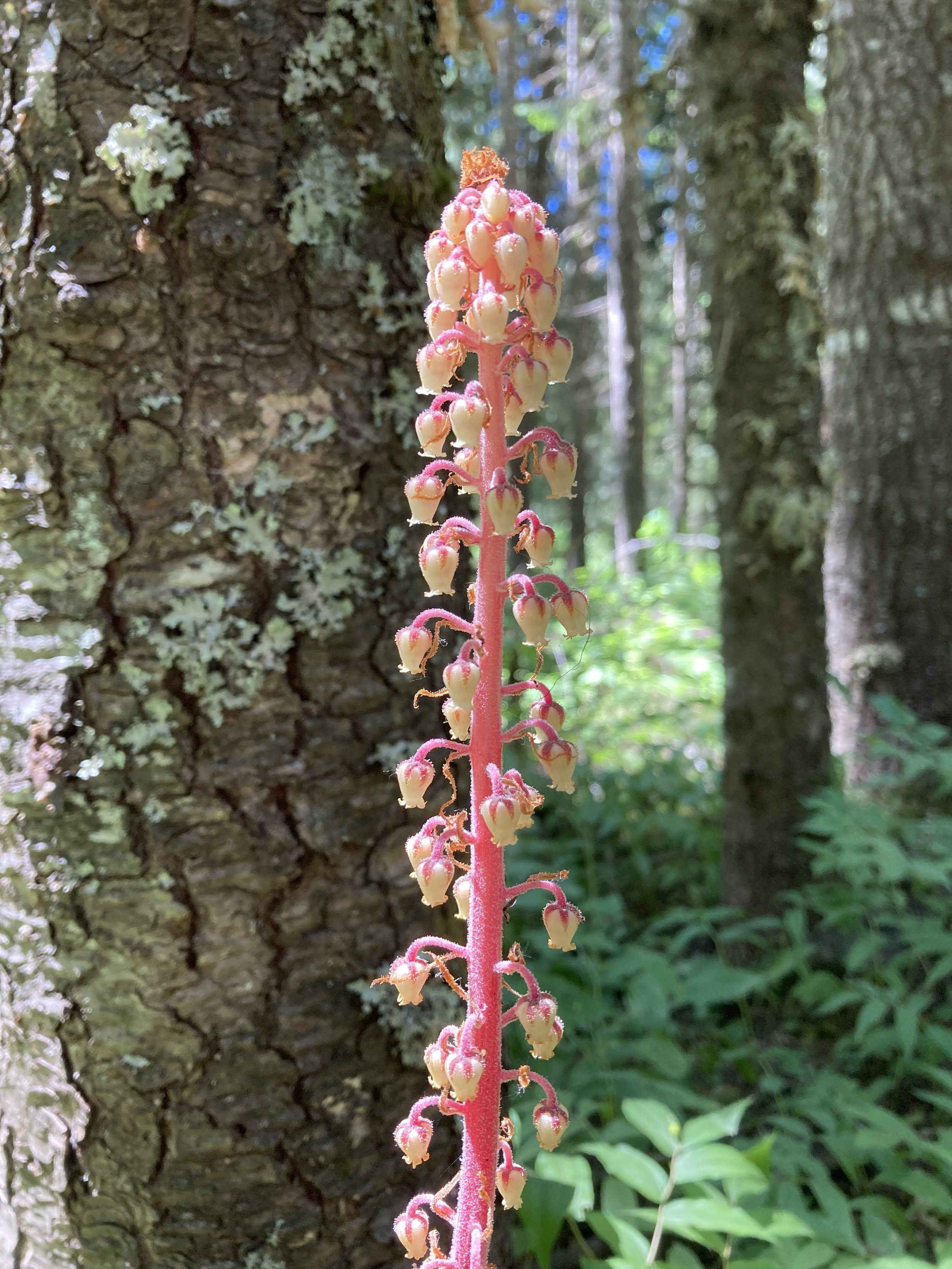
An absolutely stunning, eye-catching saprophyte (loves on dead organic matter). Can grow tall, up to three feet, towering over most other undergrowth. The stem is a dark red with silvery and STICKY hairs. Flowers are small white globe-shaped bells that line the plant all the way up. The white of the flowers with the red stalk truly sets them apart. Found in lower elevation, dense woods.
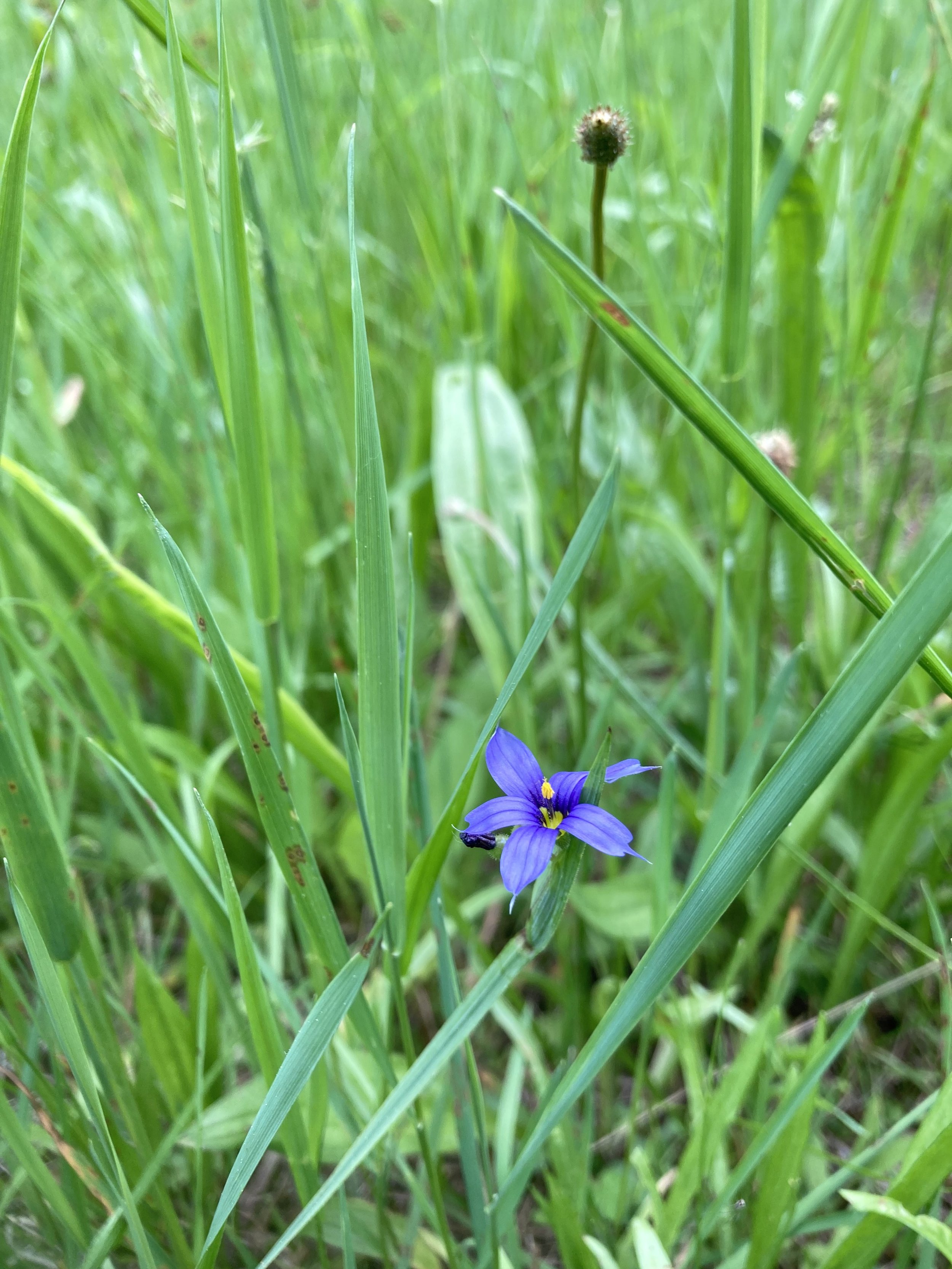
Actually part of the iris family, this plant is simple, with long, thin, grass-like leaves. Flowers grow from the end of the leaf either singly, or in groups of multiple. Having six purple/blue pointed petals, with a long central anther, and a yellow center, flowers are small but attractive. Typically found in meadows.
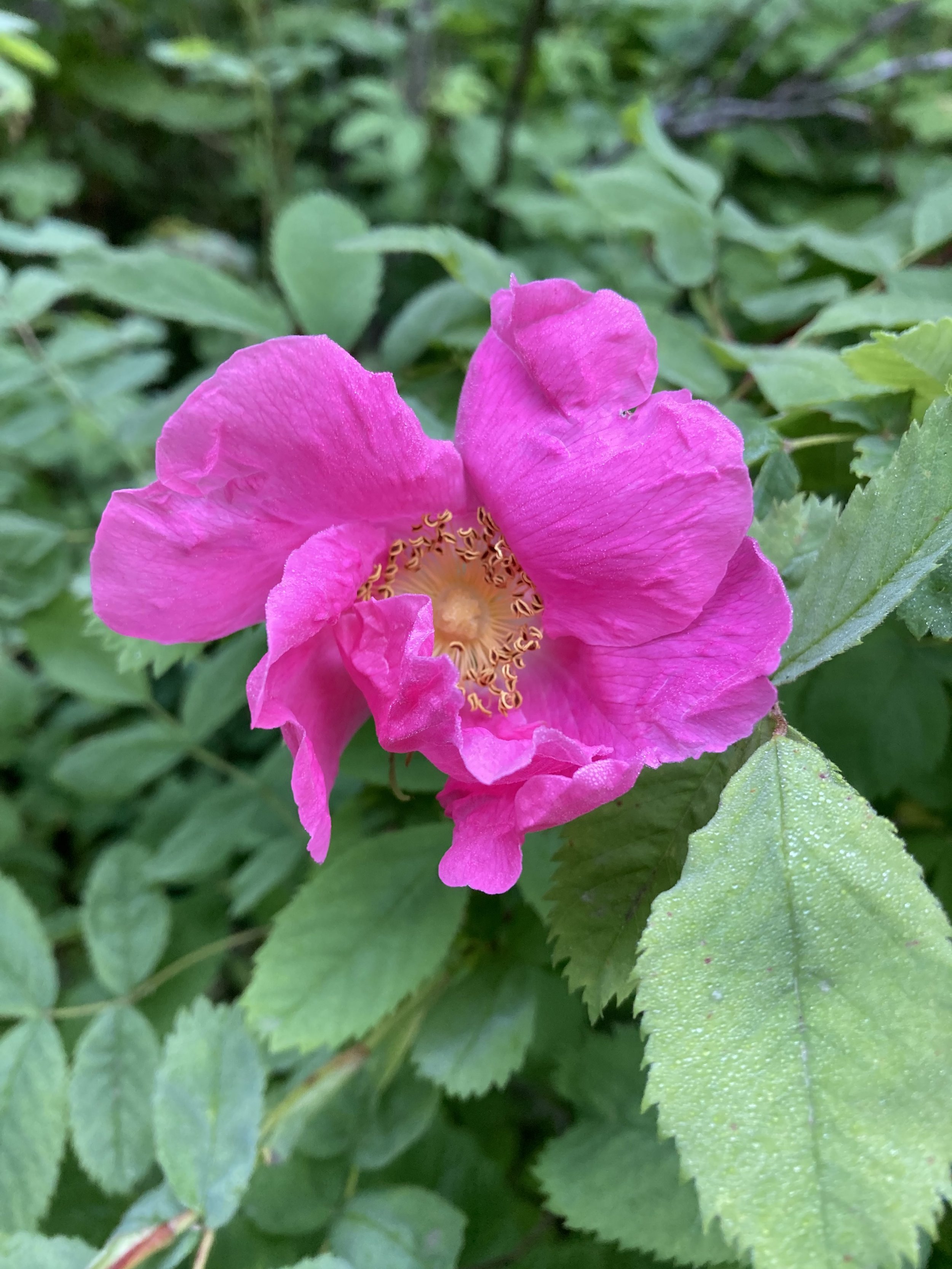
Five round petals that are a deep to light pink (depending on the species) with yellow stamens. Leaves are small, toothed and round, growing opposite of each other. A heavily thorned plant, with thorns lining the stems and undersides of leaves. After the flower, red rose hips develop. These are edible and are also able to overwinter.

Clarkia (Clarkia pulchella) is a very unique flower. Found on open hillsides in early summer, this four-petaled, three-lobed flower is a vibrant dark pink that lights up the open hillsides. There is a small white stigma in the middle that resembles a small, four-petaled flower. The flower sits at the top of an 18in plant with very thin, long leaves.
Yarrow (Achillea millefolium) is your trail best friend. The unmistakable ferm-like leaves and inflorescence of small white flowers at the top should not be overlooked. Yarrow can be used in the treatment of bleeding, burns, colds, and toothaches. It can even help regulate menstruations!
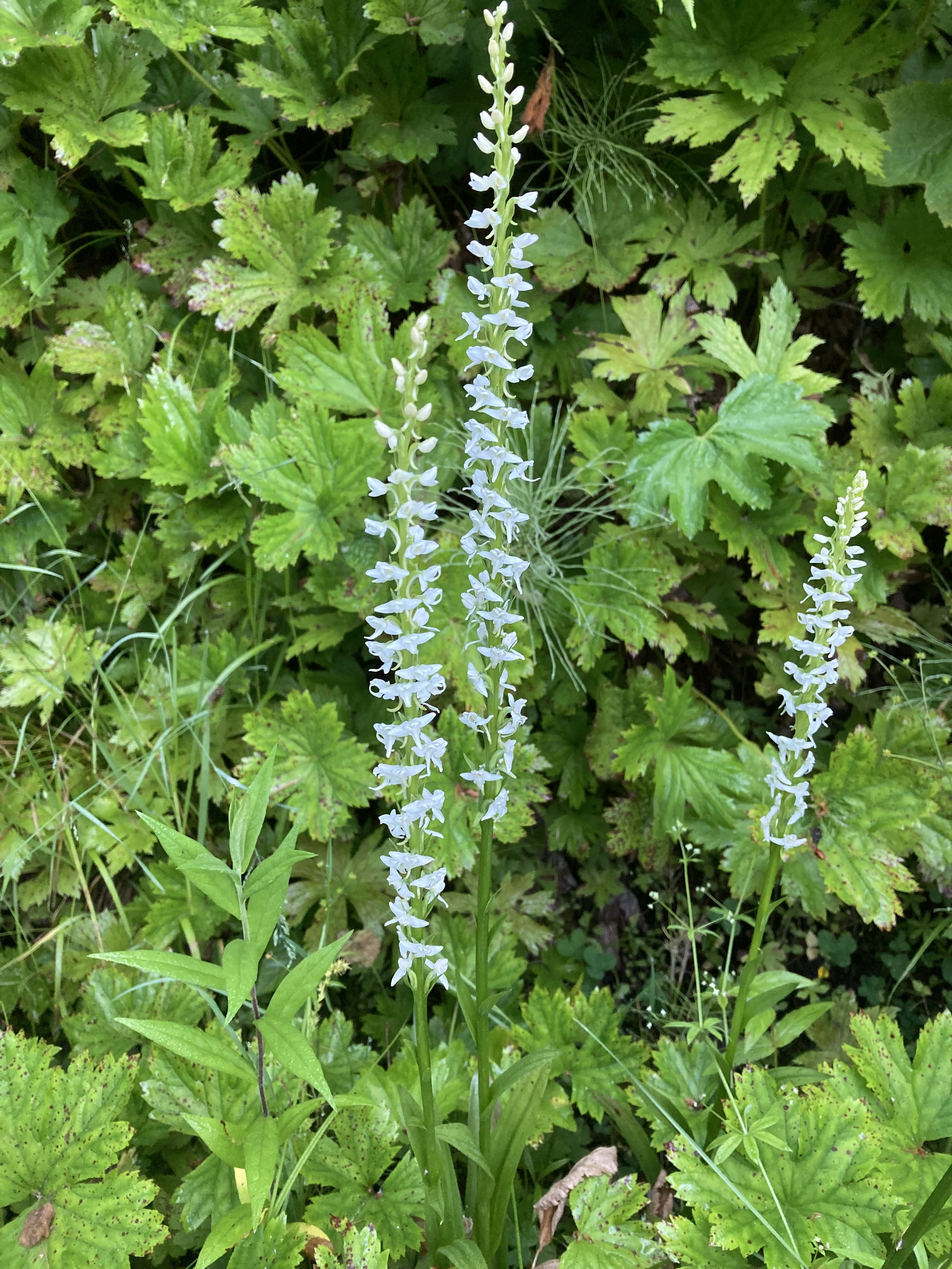
A very tall orchid, 1-3 feet. This is a tricky orchid as it’s not as “typical” looking upon first glance. Has many lance-shaped leaves going up the single stalk. The top of the stem hosts a group of small, white flowers that at first glance resemble a thin beargrass plume. Grows in wet ground. (Found in drainage ditches on trails).

A five-petalled, bell, star-shaped flower. Petals fuse together to form a bell and then separate to form pointed tips. Flowers are held singly or in several at the top of a long, thin stem. Leaves are small, skinny, and sparse up the stem. Can grow up to 18 inches. Flowers are almost the same color as a bluebell. Can grow in multiple elevations, blooming at different times. Usually in more open areas and side hills.
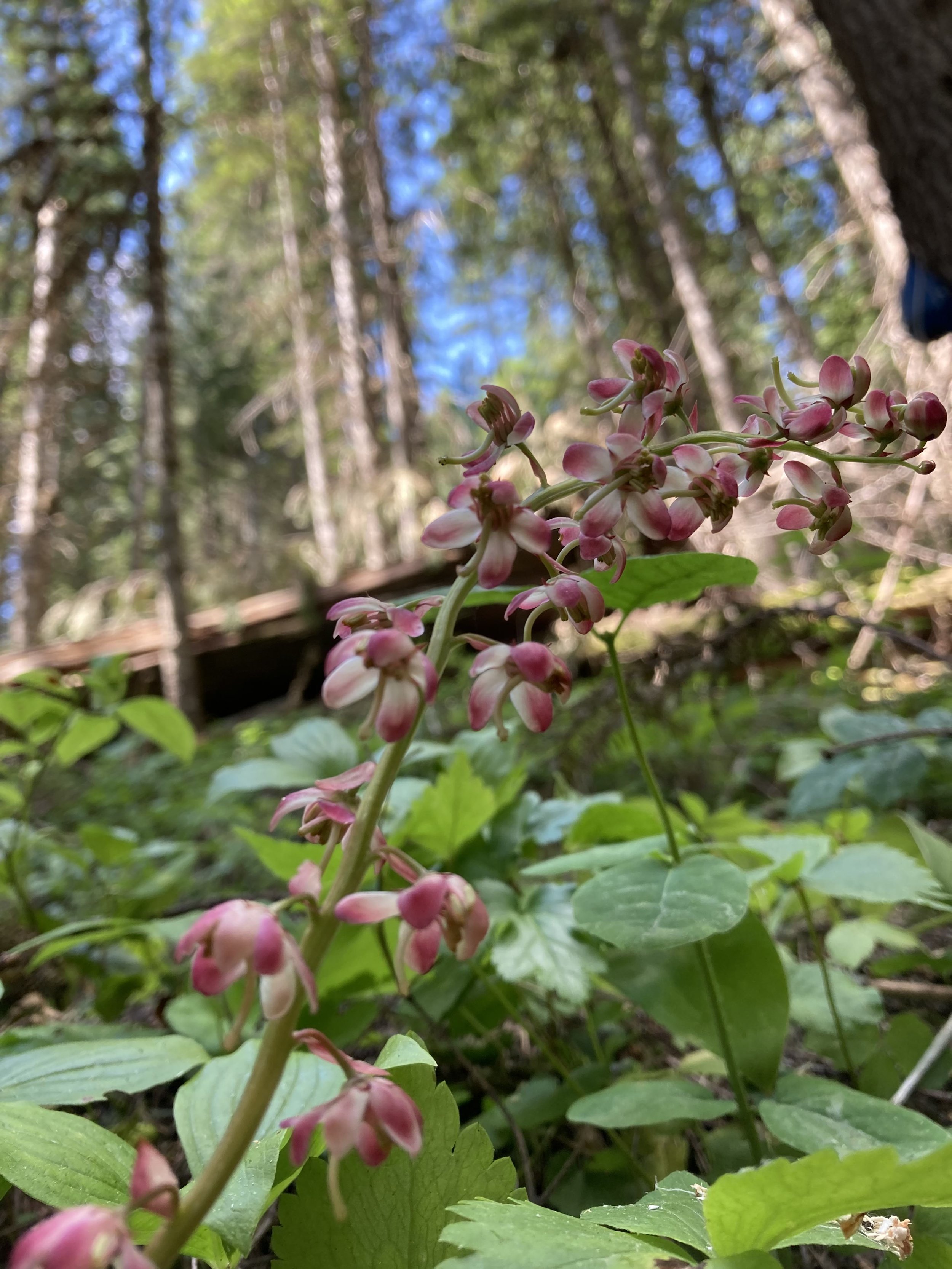
Can also be known as wintergreen. Flowers sprout from a long, bare stem. Drooping and waxy, flowers have five white-pink petals with long protruding stamens. Blossom from the bottom up. Leaves are leathery and round, being dark green. Only two at the base of each plant. Found in wet soil, around streams, and in dense forests.








